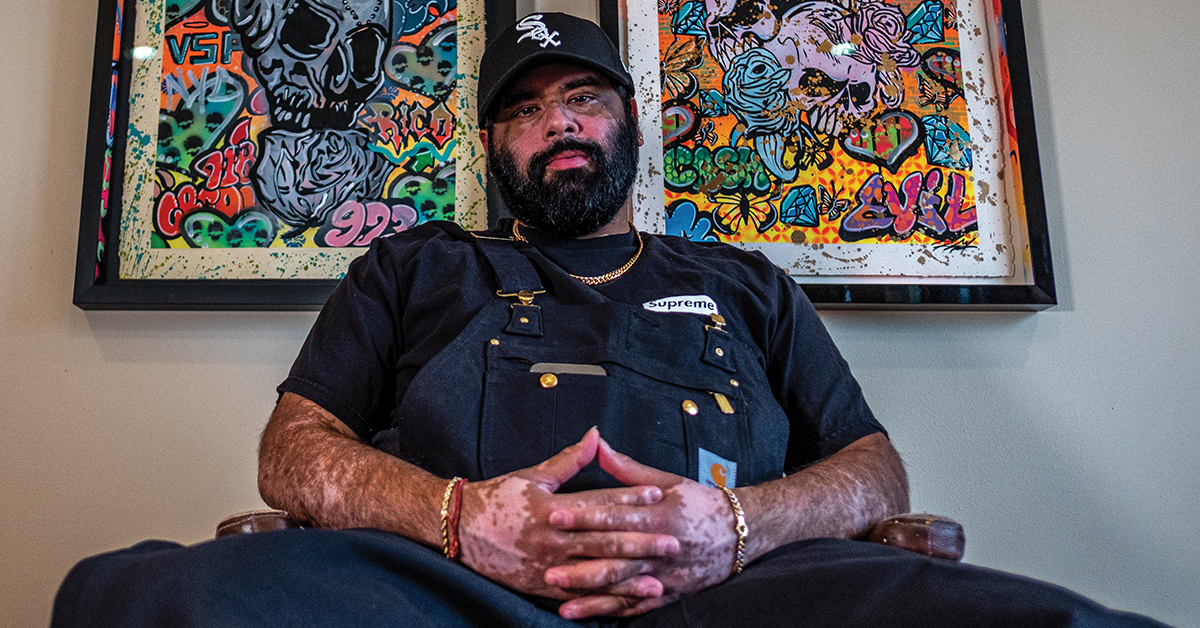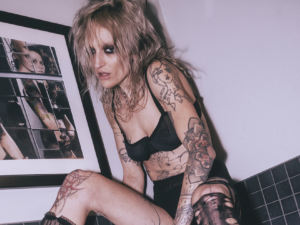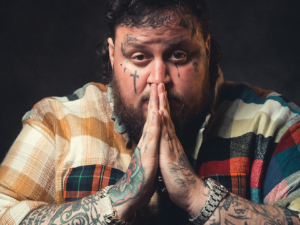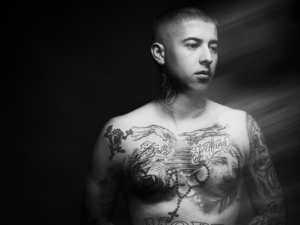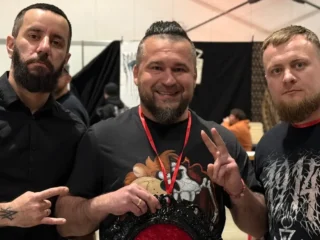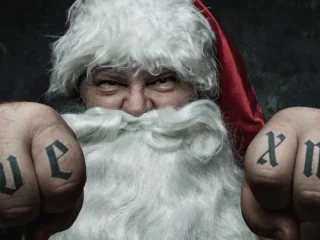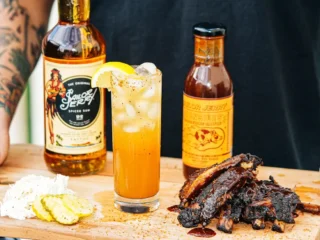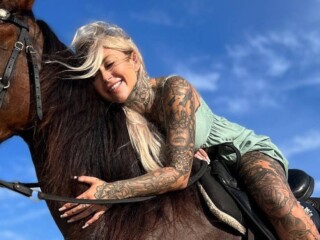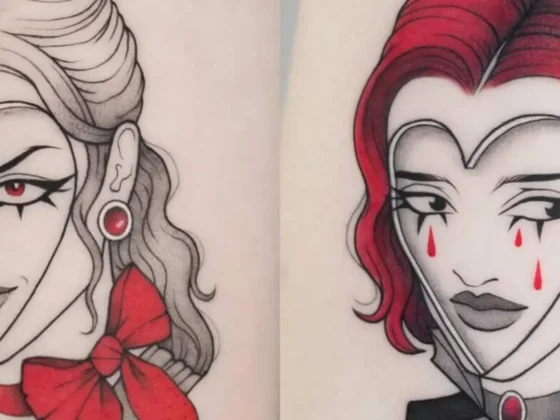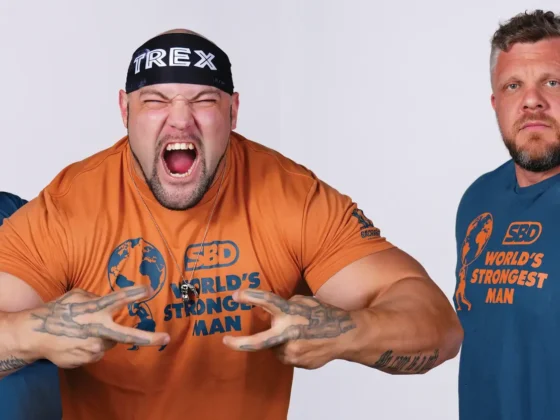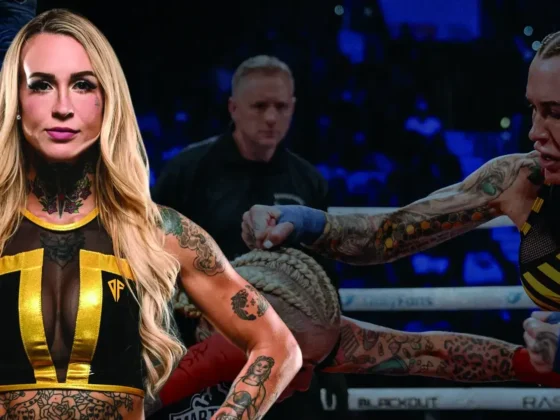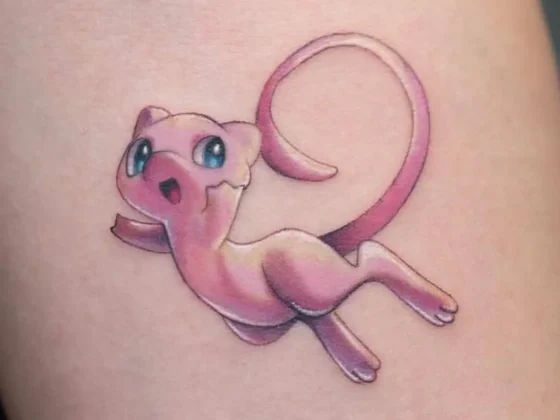Charlie Connell
September 14th, 2022
Vivid Visions
Inspired by the streets of his youth, Ricky Heeraman is on a mission to make this world a more colorful place
As Ricky Heeraman grew up in the Bronx and Paterson, New Jersey, he was surrounded by marvelous graffiti. Every piece he saw walking home from school inspired him. The vibrant colors were enthralling, and as he grew into his own artistic career, those bright hues became his trademark. We spoke with Heeraman about his roots, designing murals for a restaurant and how old-school sneaker culture influenced some of his most impressive work.

Do you remember the first time you were interested in art? The first time I became interested in art was as a child. I would watch my uncle sketch and draw, which made me want to draw. I was raised in the Bronx and later on moved to Paterson, New Jersey. Both of these cities were filled with beautiful murals and graffiti. That’s when the real interest kicked in.
What were some of your earliest artistic influences?
My earliest artistic influences were the communities I grew up in. Walking to and from school I got to see live art done publicly, whether it was murals or regular street throw-ups. Also, two of my closest friends and I used to have drawing competitions in school, we used to compete to see who could draw better Dragonball Z characters. They added to my early motivation and influence for my drawings and art. Every day we would go at it. My friend would show us cool techniques on how to shade and do certain things to make us better. He was the best artist out of all of us, God rest his soul. They definitely played a role in my early interest in art.
When did you know you wanted to become an artist? Which medium was your entryway? I saw myself becoming an artist the moment I had a chance to use a spray paint can at 13. On one of my walks back home from school, a couple of guys who just finished a mural in the neighborhood left some cans behind. I went for a go and I fell in love. Not only with the painting aspect but the whole vibe. I fell in love with hearing the metal pea every time you shake the can. I fell in love with the smell of the spray paint. And I just loved the aspect of being outside painting—hearing the essence of the city, the cars, the people—and smelling the fresh air. I guess you can say my first mediums were spray paint on public spaces and my sketchbook. My sketchbook was where I got to draw, be me and escape from my environment for a little bit.

What drew you to the staggeringly bright colors you favor? I feel like that’s what catches the viewer’s eye first, the vibrancy of the palettes used. Plus, the majority of my early artworks represented dark imagery, so I would use the bright colors to offset the tone it was giving, to show people that something so dark could be bright and vibrant. I love working with a lot of bright colors because I feel like it’s a challenge to get them to coexist and blend beautifully.
Can you tell us about the transition from creating street art to showing in galleries? This was definitely one of my hardest obstacles to overcome. Being a minority man from an urban city who did pure graffiti mixed with street art wasn’t so acceptable at the beginning of my career. I didn’t have any contacts or networks in the art world and I didn’t have someone to represent me. These people just saw a random guy who paints part-time doing graffiti and street art wanting gallery exposure. Back then I used to Google art galleries, restaurants and hotels in NYC and the tri-state area. I would call or email hundreds of people a day. Believe me when I tell you I heard “no” way more than “yes.” It got very discouraging, but I kept reaching out to people and took advantage of the ones that did say yes to me. I ended up working with the right people and it’s gotten me where I am today. I definitely wouldn’t change anything about my rocky road, it’s what builds character.
You’ve just recently painted the entirety of a restaurant (Panda Harlem). Can you tell us about the challenges in executing such a massive project? How does your mindset change when you consider the setting? Panda Harlem, to this date, is the biggest mural I’ve done. All the way from the front to back, top to bottom is filled with my artwork. Previously, it was an old event space and they needed the restaurant setting to be more vibrant and appealing to the diners. The only challenge I faced with this mural was the heights and not having proper scaffolding. I don’t do well with heights and there are certain parts of the restaurant where I had to paint nearly 30 to 35 feet in the air. I admit there were parts where my hands or knees started shaking from anxiety, but at the same time I kept in mind it’s only me here, I’m the only one that can complete this mural, so it needs to get done. That bit of motivation pushed me through my fears. After that, everything else was smooth sailing.
I just went with the flow. I didn’t draw anything up prior. I just knew it was going to be a Chinese cuisine restaurant, which catered to the NYC nightlife-dining ambience. I took that ideology and ran with it. I mixed a bit of graffiti with pop art and gave some Disney characters a little remixing. Everywhere you look in the restaurant I’ve touched and embedded a piece of me into the walls.
Where do you see the future taking you? I definitely see myself collaborating with more brands and businesses to incorporate my artwork into their products and environment. Ultimately, more people seeing and interacting with my art. My top goal is to make it into a museum one day with my artwork. Being in a museum means a lot to me, because as a kid I used to go on field trips to art museums to learn about legendary artists and what they’ve done for their time period. I want to be that artist in a museum where kids go eventually to learn about me, my art and what I’ve accomplished.

Editor's Picks
Royal & The Serpent
The hilarious and talented musician talks mental health, music, tattoos and more
Son of a Sinner
From rough-and-tumble roots to mainstream stardom, this genre-crossing musician is on a roll
A Cut Above
Celebrated barber Vic Blends can charge whatever he wants for a haircut, but all he really wants in exchange is a conversation and human connection

